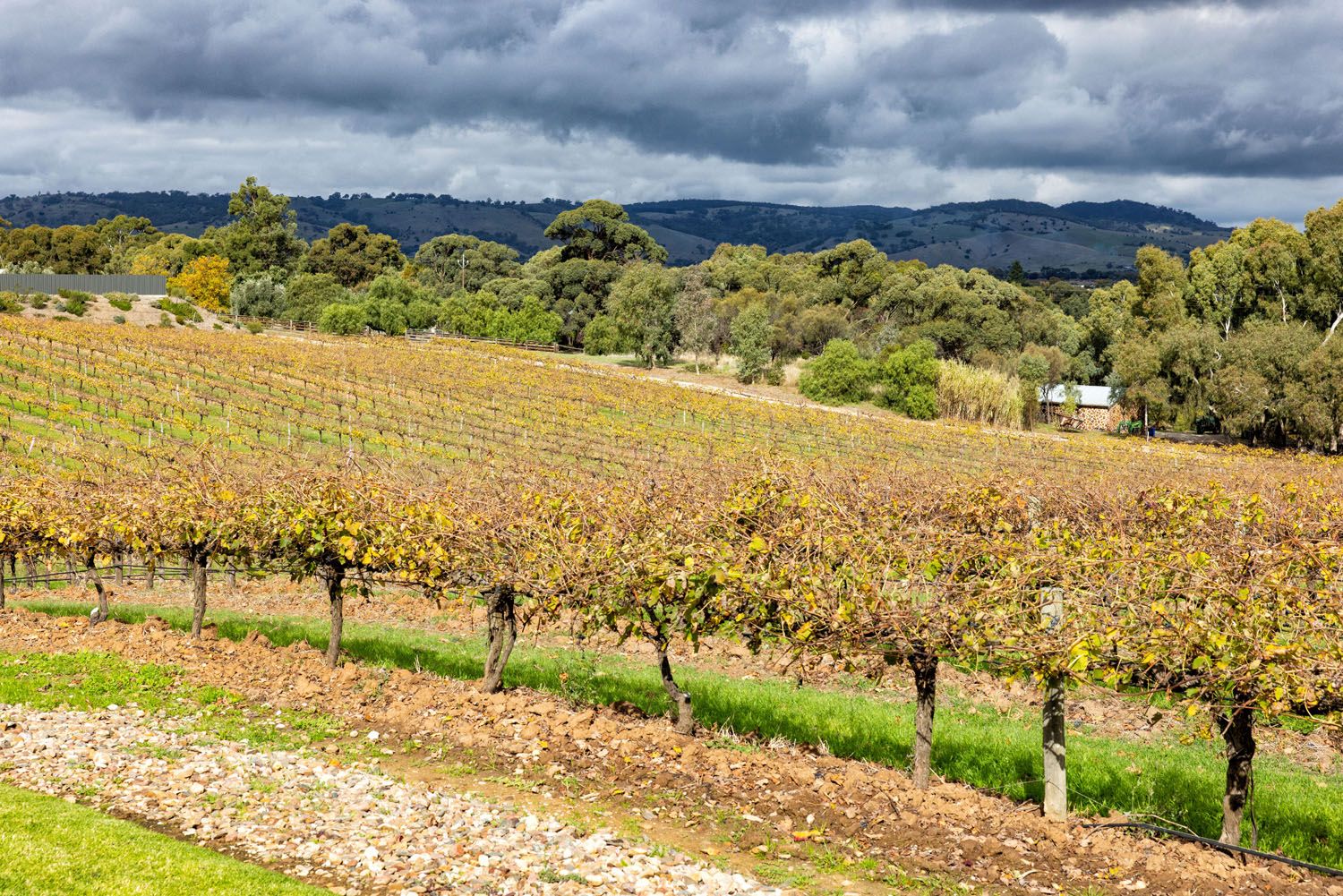 |
| Storm clouds over Barossa vineyard |
In South Australia, a short distance from Adelaide, is a wine region with an international reputation, especially for flavor packed red wine. Aussie shorthand for the place is"The Barossa."
But say it like a native, compressing the word so that it sounds like "Ber-ossa," not "Ber-ross-a." The full name is the Barossa Valley, Australia's premiere producer of a signature red wine, known as Shiraz.
Syrah is one of the world's best known and best red wines. The benchmark for world class Syrah is the northern Rhone Valley of France. Australians, though, decided to call Syrah after what they believed to be the grape's city of origin, in a land far from France.
In the 19th century, Australians believed the origin of the Syrah grape was Shiraz, the ancient capital of Persia. DNA testing eventually proved this wrong, but the Australian wine business had established the name Shiraz, so ever after, the name stuck.
Barossa Shiraz is at the big and robust end of the Syrah style scale. The wines are rich, ripe and concentrated with plenty of dark fruit flavors. And it is the antithesis of northern Rhone Syrah, like Cote Rotie, that is all refined smoky spice and raspberry.
Aside. In 1993 (Has it been that long ago?) I had the good fortune to be invited as one of two international judges for Penfolds Rewards of Patience, a comprehensive tasting of Penfolds wines, stretching back to the 1950s, held at the Penfolds main winery in Nuriootpa, Barossa Valley.
The marathon tasting of multiple vintages of 13 red wines, seven white wines and a handful of "Special Bin" wines, lasted three days, standing at a tasting bench, and included such vaunted tasting of 22 vintages of the legendary Penfolds Grange.
Shiraz, the iconic Barossa red wine was represented by five blends (most, like the Grange, blended with 15-20% Cabernet Sauvignon) and three 100% varietal Shiraz: Magill Estate, Coonawarra, Kalimna.
Common descriptors for the 100% Shiraz, mentioned by most judges, were chocolate, plum, mulberry, spice and saddle leather. The addition of Cabernet Sauvignon, in the Shiraz/Cabernet blends, shifted the descriptors more to blackberry, leafy and anise.
Of course, life is not all Shiraz, even in The Barossa. After all, what would life be like without Cabernet Sauvignon or even Grenache, two reds that are part of the mix in the Barossa Valley and neighboring Eden Valley, officially a part of The Barossa.
Here's a brief look at what to expect from Barossa's main grapes:
Cabernet Sauvignon: deep in color, with forward cherry and plum flavors; excellent as a varietal and in blends, such as Penfolds Bin 707, Cabernet Sauvignon and Shiraz.
Grenache: ripe raspberry, fine tannin and good acidity; Barossa draws its depth and complexity from a high percentage of old vine Grenache.
Mourvedre: called Mataro by Barossa old timers, Mourvedre is dense and herbal, mostly from old vines that can also impart ginger and ripe blackberry notes.
Riesling: still the most planted white grape in The Barossa, the variety is known for its intense tropical fruit and citrus flavors, such as the range of Rieslings from Wolf Blass.
Chardonnay: not a star player in The Barossa, but is full bodied with crisp acidity and ripe apple flavors.
Semillon: the Barossa style follows the robust full-bodied Australian style for this popular white wine. Barossa Semillon, especially aged in American oak, is rich and figgy.
As a seasoned wine drinker, or an advocate expanding your wine knowledge of Australian wine, a good starting place is the Barossa Valley. In the words of the Down Under's noted wine writer, James Halliday, "The Barossa Valley is, and always will be, the womb of the Australian wine industry."
Next post: Chardonnay Styles
Leave a comment at boydvino707@gmail.com



No comments:
Post a Comment
Note: Only a member of this blog may post a comment.